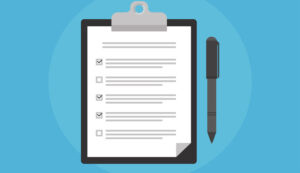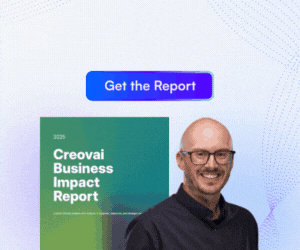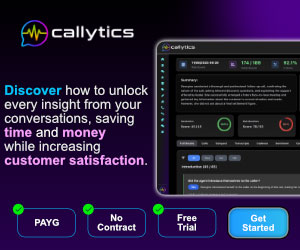As anyone will tell you, customer surveys are vital in gaining insight into your customers’ perceptions of your product, brand or service.
But getting it right can be quite tricky. We have asked our panel of experts for their tips.
1. Have clear objectives
Ensure that you and your business have clear objectives for what you’re trying to achieve with the survey. Some are quite specific, like whether the customer was satisfied with that particular call. Others are more strategic, such as impression of the brand, or competitive positioning. So have a word with your marketing department (if you have one, of course) to gather some insight into any work they might be doing at the time regarding customer surveys.
2. Keep it simple
Studies have shown that if a survey has too many questions the responses tend to become more inaccurate as one progresses through it. Others may simply abandon the survey altogether if it’s longer than expected. In my experience I have always tended to prefer shorter, more frequent surveys across different “events” that occur with your customer. That way, you can gauge your customer’s satisfaction with that particular event and begin to build a profile of your customer’s likes and dislikes.
3. No more than three or four questions

Gene Reynolds
I would recommend no more than three or four questions. That way, when you say it will only take one minute of a customer’s time, you really mean it!
4. Net promoter scoring
Look for a recognised method to consistently score and trend the results. There are a number of them out there. My favourite is called “net promoter scoring”. It goes like this. You ask the question, “on a scale from 1 to 10, how likely would you be to recommend our product or service to a friend or colleague?” You ignore all scores from 4 to 7, you add 1 for 8, 9, or 10 and subtract 1 for 1, 2, or 3. From there you start adding up the totals. This method is particularly useful, because research from Harvard Business Review has indicated that results from this single question have a direct correlation to company profitability. Major banks and airlines use net promoter all the time, so you will be in good company.
Click on this link to find out more about Net Promoter.
5. Use external call surveys
Now, there are some great little tools in the marketplace which will help reduce the overall workload on your agents and your business. Of course, most of them will charge you for the service, but the analytics you get on the back end are usually worth the cost. Some services will allow you to set up any set of questions you fancy. All you need to do is to ask the customer if they would be interested in a 1 minute survey at the end of the call, for example. If they say yes, the agent transfers the call to one of these services, keys in a code (usually a customer identifier or some other classification), and releases the call to the customer. The scores are tallied up and sent to you. The public sector has been using services like this for years.
Gene Reynolds is the Director of Blackchair

Alan Trickett
6. Make it as short as possible
Never forget that when customers give you their feedback they’re taking up their own time – and often for no obvious short-term gain. That’s why it’s vital that the questions you ask them are as short and relevant as possible, and that the means by which they can respond are as flexible as possible. Postal surveys, person-to-person interviews, IVR and email surveys should all be considered.
Alan Trickett is a Senior Solutions Consultant with Aspect
7. Map the questions you ask to your business objectives
There is no point in asking people for their feedback or opinions if you are not going to make use of the results.
8. Keep questionnaire length reasonable
What is reasonable will depend on the channel over which the response is requested (i.e. shorter for IVR than for Web). It will also depend on the purpose of the survey. Set expectations at the start of the survey – e.g. “This survey will take no more than x minutes” – and stick to them.
9. Ask only what is relevant to the context in which you have asked the question
If you are asking a customer for feedback about their interaction with your contact centre agents, don’t ask about their experience with your website. (Ask about the website while they are still on it.)
10. Personalise the invitation to provide feedback
You are much more likely to get a response if you stand out from the “please help us to help you” crowd. Within the personalisation, add proper context (without appearing too “Big Brother”-ish). This means telling your customer why you are asking for their feedback, so they can relate your request to a specific interaction with you.

Gary Schwartz
11. Ask as soon as practical after the customer’s interaction with your business
In some cases that means waiting a day (but no more) after they have spoken to your agent. In others it means asking them before the call if they are willing to stay on afterwards to provide feedback directly via an IVR interface.
12. Feedback on the feedback
Tell people what you have done with their responses to your questions. There is no more powerful incentive than knowing that the time spent responding to a survey was well worth it, and that one’s voice was heard.
It only remains to say that it is important to tell your employees about your customer feedback programme from the outset. If employees understand what you are trying to achieve, they will not fear feedback. If feedback is used to help them improve their performance (and their pay), they will positively look forward to it.
Gary Schwartz is Senior Vice President of Marketing at Confirmit
13. Filtering bias
Customer satisfaction is a very fluid measure, easily impacted by the most recent experience with a contact centre, so customer satisfaction may not be as easy as surveying customers about their satisfaction levels.
Filtering bias comes in many guises. Filtering can come in the way the question is worded but it can also manifest in the way data is collected and collated. Out of necessity, surveys are structured to allow data to be gathered for later analysis. But this structure often dictates how customers will react and can be biased towards what the answers are presumed to be rather than collecting the true ‘voice of the customer’.
Surveys often only allow one response to be recorded per customer, even though the customer may have multiple views. Customer surveys can leave a large proportion – often as much as 40% – of the customer view unreported.
14. Survey respondents – self-selection bias
Customers that choose to respond to surveys are typically those that have had a very good or very bad experience. The views of the majority of clients, that populate the substantial middle ground, can go largely unheard. This inherent client self-selection can produce skewed survey results that are far from representative.
15. Collection and reporting time delays
Post-encounter surveys introduce time delays that can limit data integrity and value. Accuracy can also be blurred by a customer’s multiple interactions with an organisation, with the customer not fully remembering the exact interaction about which they are being quizzed.
16. High costs and sample size
For any survey to be of value a reasonable sample size is essential. Ad hoc samplings can provide a ‘sense’ of customer opinion but for pivotal business decision-making more validated information is necessary. Reaching a critical mass of relevant surveys requires a great deal of time and money. With low response rates, it can take one or two hours of outbound calling to collect one completed survey.
17. Speech analytics: an alternative to customer surveys
Whilst surveys have long been used to gauge general satisfaction, this method seldom provides more than a qualitative feel for issues impacting customer satisfaction. By addressing the gaps in the survey methodology and accessing 100 per cent of calls, speech analytics provides a much more cost-effective way of quantifying the ‘voice of the customer’. Creating timely, accurate feedback, speech analytics enables decision makers to act confidently on this intelligence to maximise customer satisfaction and business improvement.
Jonathan Wax, VP and General Manager of Nexidia EMEA
18. Avoid using outbound calls
Making outbound calls gets the customer’s opinion but is costly and time consuming, as well as often just too late. By the time a customer is contacted their opinion of an interaction may be coloured by a follow-up or lack of a follow-up event such as a letter or email.
19. Immediate response
The customer’s opinions should be obtained immediately after the interaction, not as part of a completely unrelated interaction by mail, email or phone.
20. Tie in with other data
The data needs to be analysed in a way that gives quick and easy insights into changes in customer satisfaction. Ideally cross-analysis with “hard” data about the original call such as agent-id, queue-time, etc. should be done. If you don’t measure it, you cannot manage it.
21. Make survey results available quickly
Information needs to be made available quickly. If results are falling outside acceptable limits, alerts need to be raised so management can take action.
22. Make the process visible to your customers
You need a process that is visible to your customers, demonstrating to them that you are proactively asking for their feedback with the objective of improving the service you provide.
Paul Murphy is the Managing Director of Square Systems Ltd
Have we missed any good ideas?
Let us know your thoughts by leaving a comment in an email to Call Centre Helper
Author: Jo Robinson
Published On: 25th Aug 2010 - Last modified: 12th Nov 2024
Read more about - Hints and Tips, Alvaria, Customer Experience (CX), Customer Feedback, Customer Service, Empathy, Nexidia






































Interesting reading, can anyone recommend a provider of the services mentioned in question 5. Use external call surveys
Hi Ian
There is a company called servicetick that offer the services mentioned
Regards
Shane
There is also a company called VIRTUATel that tick’s all the boxes above. They have a lot of experience including running the largest UK survey service for a client conducting 1.2 million invitations a month.
I’m not sure where Gene got his NPS calculations from butthe correct way to calculate your Net Promoter Score is to subtract the percentage detractors, (customers scoring you 1-6) from the percentage promoters, (customers scoring you 9 & 10). so if you surveyed 100 customers, 20 scored you between 1-6, 30 scored you as 7 or 8, and 50 scored you a 9 or 10, your Net Promoter Score is 30%. Customers scoring 7 or 8 are known as Passive. If you use this method to survey your Customers, please remember you should be contacting those Customers who are showing significant disatisfaction e.g. scoring 1, 2 & 3 to try and rectify their issues, there’s nothing worse than telling someone your unhappy and being ignored!
I would just like to say that I disagree with statement 18 about Avoid using Outbound calls. I believe that telephone surveys are extremely useful for a number of reasons. Our clients utilise our call centre to complete a range of Customer Satisfaction surveys to gather feedback and recommendations directly from their existing customers and customers that have stopped using their service. Our clients say that the service is invaluable to assisting them to understand their customers & the service that they provide. Some of our clients send survey emails but have had a very small response back, where as we can capture a high % of surveys from the data provided.
Re: #4, NPS – we’re getting closer with Liz’s correction but the actual scale is 0 – 10, not 1 – 10. Hence 0 – 6 are considered Detractors, 7 & 8s Passives, and 9 & 10s Promoters. From there, Liz’s comment is correct re: the method of calculation. Anytime you have more Detractors than Promoters, your score will be negative. More Promoters than Detractors, positive. Note that it is the % of TOTAL respondents used in subtracting % Detractors from % Promoters. So while Passives don’t count for you or against you in the math, they factor into the denominator.
Great post. I’ve written a tongue-in-cheek post called How to Drive Customers Away With a Survey on my blog that serves as an appropriate companion piece to this post.
Afternoon could you please advise me on how to handle myself at an interview tommorow for a call center operator post
please help me,how do i go on about advising a bank manager on dealing with communication issues encoutered at his bank.
1.increased complaints form customers regarding poor service
2.complaints from staff specifically(lack of communication)
3.complaints from head office(specifically incomplete or inaccurate customer survey data submitted.